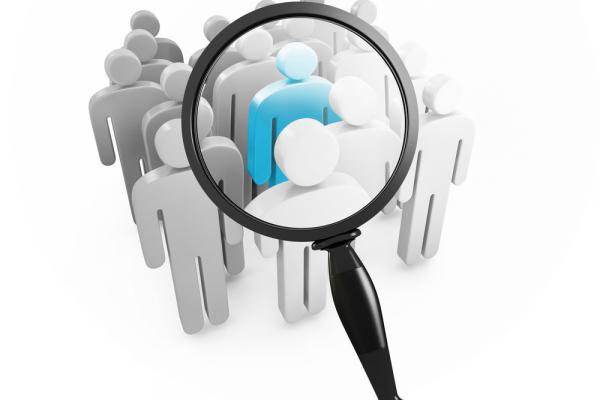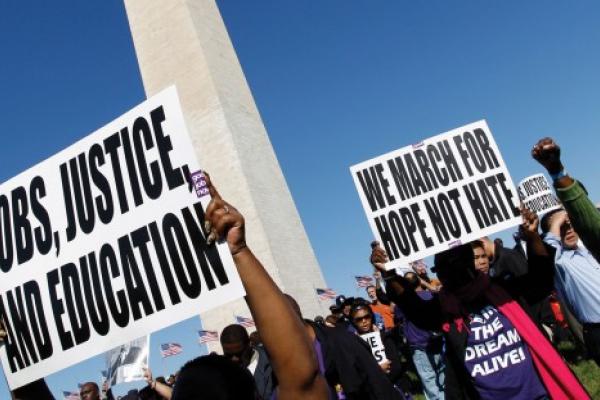I created my SOLE space by providing one desktop computer per four students, a whiteboard to write questions on, and paper and pens for students to take notes for their sharing at the end of SOLE.
Then I asked a big question — “Why does a blue whale have such an enormous heart?” — and I let the adventure begin. My students began their investigations.
After 40 minutes, they shared their discoveries.
“Blue whales swim all over the world,” said Ki’ara, “So they need a gargantuan heart to be their motor.”
“Blue whales can call to each other over almost a thousand miles,” said Heavenly. “They need a big heart to talk to each other.”
“They swim together in pairs,” said Amare, “So they need huge hearts to care for each other.”
“Yeah,” said Isaac, “That’s true … it takes a huge heart to care for somebody.”
“Kids who are nice to me on the playground must have a big heart like a blue whale,” added Aydan. “And people who are mean must have small hearts.”
“Hmmm,” I said. “How can we have big hearts for each other instead of small hearts?”
This morning at breakfast, I was reading an article in the newspaper about how the Affordable Care Act is negatively affecting some individuals — especially those who buy their own insurance, rather than receiving it through an employer. The article was interesting, but what struck me the most was the way the problem was framed. Rather than approaching the story from a public policy angle, the article mainly focused on the reaction of consumers of health-care goods and services. The crux of the article was whether some individuals should be required to buy a product they might not want or need so that other individuals could have affordable access to health-care products they need desperately but might not be able to afford under the old regime.
The dilemma was presented as a story of tension between healthier consumers and less healthy consumers fighting to get the best deal for their health-care dollars. But could there be another way of thinking about health care, and about our society as a whole? Is there a framework that would allow us to consider these questions in a way that assumed connection, caring, and community between individuals, rather than the zero-sum competition of the market?
Ann Romney is a gracious woman.
Such is my first and lasting impression of Mitt Romney’s wife of 44 years and matriarch of a Romney clan that includes the couple’s five sons and more than 20 grandchildren.
When I arrived at a Mormon bookstore on a recent Thursday evening, the line of fans waiting to get Romney’s autograph on her new book, The Romney Family Table: Sharing Home-Cooked Recipes and Favorite Traditions, extended around the block.
The first time Jesus preached in a synagogue, he said that he had come to proclaim release to the captives (Luke 4:18). Those captives include people who have disabilities, sometimes literally. My friend Margaret who works overseas with people with disabilities told me that some of them have scars on their wrists from being chained to their beds for years as children. Pastors from a number of different countries have told me similar stories.
The United Nations Convention on the Rights of Persons with Disabilities will not right all the wrongs committed against people with various disabling conditions, but it puts a line in the sand that squares with the message of Jesus.
People with disabilities tend to be the most oppressed in any community. Even here in the U.S., they are more likely to be unemployed, poor, and victims of crime compared with the general population. People with disabilities from around the world wrote the CRPD, patterning it after the landmark U.S. legislation, the Americans with Disabilities Act (ADA).
Christianity is facing an identity crisis that boils down to one question: Who is God? It’s the question that Rob Bell tackled in his latest book What We Talk About When We Talk About God and it’s the question Rob and Oprah Winfrey discussed this week on Oprah’s Super Soul Sunday ... From nearly the beginning of religion, the human experience of the sacred has been marked by ambivalence. The gods were fickle and you never knew where you stood with them. They were loving and wrathful, forgiving and judgmental.
Last week, Half in Ten released its third annual report on its commitment to and efforts toward U.S. poverty reduction. The Half in Ten Campaign is a joint project of the Center for American Progress Action Fund, the Coalition on Human Needs, and The Leadership Conference on Civil and Human rights, with a mission to build political and public will to cut the nation’s poverty rate in half in 10 years.
In her remarks, Neera Tanden, president of the Center for American Progress, stressed the need to move the conversation in Washington away from implementing austerity measures that ultimately harm the poor.
Scripture also reminds us over and over again to care for the least of those in society, including widows, orphans, and immigrants in our midst. We are called to be generous with what we have. Labor Secretary Thomas Perez echoed this truth at the Half in Ten meeting, urging that at this time, we need to “turn toward one another, not against one another.”
The Vatican on Monday moved to quash speculation that at least two women would be among the cardinals that Pope Francis will name in February, saying such a move was “not a realistic possibility.”
Over the weekend, Irish media reported that Francis could name Linda Hogan and Mary McAleese as cardinals. Both are associated with Trinity College in Dublin: Hogan as a professor of ecumenism, and McAleese, the former president of Ireland, as a former professor.
Some Italian media that carried the story speculated that Cecile Kyenge, the Congo-born Italian minister of integration, could be a candidate as well. Kyenge is a devout Catholic and a graduate of the Catholic University of the Sacred Heart in Milan.





